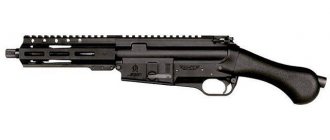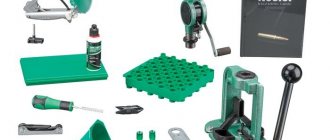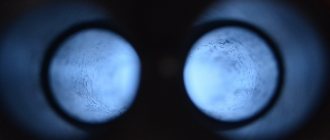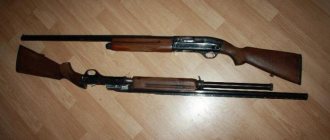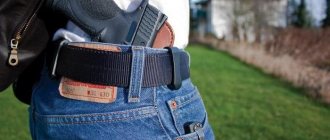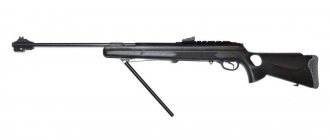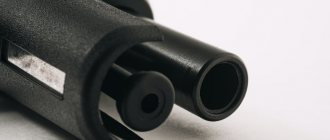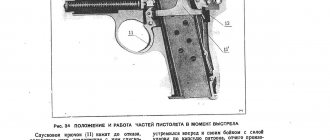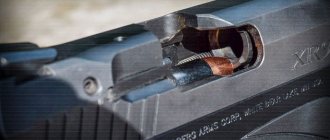Absolutely any firearm, regardless of its caliber, operating principle and type of ammunition used, requires careful care, regular cleaning and lubrication. Otherwise, it may misfire at the most crucial moment, fail, which will entail serious expenses, or even become a threat to life! How to clean a hunting rifle, what rules must be followed and what do you need to know about cleaning and lubricating weapons?
Why do hunting weapons get dirty?
The reasons why a hunter's weapon becomes dirty are quite obvious. Forests, steppes, swamps, fields do not in any way resemble a scientific laboratory or a sterile hospital ward. No matter how carefully the gun is used during hunting, no matter how comfortable the conditions are when it is transported, its metal parts in the open air will inevitably come into contact with moisture and other unfavorable factors. And if you are unlucky with the weather or the weapon falls out of your hands...
In addition, cleaning the gun is necessary for another reason. The fact is that when fired, the barrel experiences high pressure and high temperatures. Hot gases and particles of burning gunpowder lead to the formation of “rashes” on the inner surface of the barrel - small pockets of rust that tend to further develop into shells. Soot from black powder has the property of attracting moisture.
In addition, cleaning smooth-bore weapons, like rifled weapons, allows you to get rid of soot, scale and so-called copper plating - residues of particles of a bullet or other ammunition in the bore. And although there is no universal answer to the question of how to properly clean a hunting rifle, it is strongly recommended to follow the basic principles.
Step by step cleaning
Now that you know more about the basic cleaning rules, it’s time to move on to the maintenance procedure itself. It is best to carry out the work according to a certain algorithm of actions so that cleaning is as effective as possible.
Step 1
Removing lead plaque. It is recommended to use a plastic cleaning rod or a bronze brush for this purpose, so as not to leave scratches on the rifled barrel. The carbon deposits are removed quite easily, so you don’t have to put in any serious effort. Hand movements should be smooth and leisurely.
Step 2
Degreasing the barrel. This procedure is carried out using special alkaline compounds, sold in almost every gun store, or gasoline. The chemical is applied to the same plastic cleaning rod in an even layer. Don't overdo it with the lye, otherwise it will be difficult to clean.
Step 3
Drying weapons. Before you begin lubrication, it is necessary to thoroughly dry the cleaned and chemically treated barrel. To do this, you need to place the rifle on a horizontal surface in a room where there is dry, warm air. For example, you can simply put the rifle on the floor near the radiator for 12 hours.
Step 4
Rifle lubrication. To carry out this procedure, you will have to acquire a high-quality mineral composition (best from an imported manufacturer). The oil should be applied in two stages in a thin layer. If too much smoke comes out during the test shot, you will need to remove some of the compound using a cleaning rod.
It is worth noting that lubrication of moving elements is carried out when the rifle is not completely disassembled, and also with a composition that is less dense. For example, you can dilute regular gun oil with kerosene in a ratio of 1 to 3.
When to clean
There is a fairly common misconception that says that frequent cleaning is harmful to the gun, as it leads to scratches, abrasion of chrome surfaces, and so on. It should be noted that if you neglect basic tips on how to properly clean a gun, then an expensive weapon can break down much faster - within a couple of years.
Experts recommend cleaning your weapon at least once a month, even if it has not been used.
In addition, there are strong recommendations, including from manufacturers, when cleaning is simply necessary:
- after purchasing a new gun;
- in the process of shooting it;
- after every hunt;
- at the end of the season.
Cleaning the weapon immediately after purchase allows you to get rid of smudges of factory lubricant. In addition, this is another reason to carefully inspect the weapon in a calm environment, check the operation of the trigger mechanism on a spent cartridge case, and make sure the quality of the weapon’s assembly.
When zeroing on a stand or in a nearby ravine, the gun is cleaned literally after every shot. When using cartridges with smokeless powder, it is recommended to carry out hygienic procedures at every long rest, and when shooting with black powder - immediately after a hunt.
During the off season, the gun is, of course, not used. But this does not mean that it is guaranteed to be free from moisture and corrosion. It is advisable to carry out cleaning and lubrication monthly.
Washing bullets
A clean bullet is the key to a long rifle life. It is especially recommended to carry out this procedure for our domestic ammunition, adored by most pneumatic gun owners for its low cost. Here are the instructions according to which the procedure must be carried out:
- We pour lead ammunition into a glass jar and fill it with kerosene or diesel fuel. The chemical composition will rid the ammunition of most foreign bodies, and will also prevent the possibility of galvanizing.
- We pour the oil products back into the container, and then dry the parts. The chemical composition can be reused, but no more than 3 times. As for drying, it can be done in the same place - near the heating radiator.
- Place the bullets in a clean container, then pour in a soap solution or water mixed with dishwashing detergent (AOS, Fary). The cleaner will completely remove all kerosene residues and the bullets will remain clean.
- If you don’t have time to dry the bullets for a long time, you can use a hair dryer or floor heater. However, be sure to dry your ammunition before using it in your rifle. Otherwise, it will lead to plaque formation.
Clean bullets do not stick to your hands and do not have a characteristic oily coating. Such ammunition leaves behind significantly less soot and also has better accuracy when firing from long distances, since it rarely deviates from the intended trajectory.
Cleaning and lubrication accessories
A standard gun cleaning kit usually includes the following components:
- cleaning rod consisting of 2-3 segments made of wood or aluminum;
- metal brush for removing carbon deposits, rust and metal residues;
- bristle brush for applying alkali-based lubricant;
- puff brush for neutral lubrication;
- vishers are special devices that are screwed onto a cleaning rod and have holes for holding rags or rags;
- brush for removing dust, dirt and debris;
- “toothpicks” – sharp wooden sticks for removing dirt from hard-to-reach places;
- a set of oils and lubricants.
Of course, this list may be subject to various changes, but the basic set consists of these elements. Moreover, such a set of tools and devices allows you to both clean the gun after a hunt and use it at a rest stop.
Step-by-step instruction
Before we tell you how to properly clean a weapon, it is necessary to focus on the fact that it must be unloaded! You need to make sure of this first!
After which you can begin manipulations, guided by the following algorithm:
- break the trunk or, if it is not breaking, dismantle it;
- screw a metalized brush onto the cleaning rod and walk it several times along the entire length of the barrel, removing the lead, which provokes rapid corrosion;
- the place of the brush on the cleaning rod is taken by a visher with a rag or rag inserted into it, and the cleaning process continues until traces of lead completely disappear on the material;
- if after two or three changes of rags traces of lead still remain, then the rag is moistened in kerosene or turpentine;
- the visher is replaced by a bristly brush, with a universal or neutral lubricant applied to it, distributed along the entire length of the barrel bore;
- external metal parts are thoroughly cleaned of dirt and dust and lubricated with a clean, lightly oiled rag;
- the same is done with wooden parts;
- the gun is assembled, if necessary, any grease that accidentally gets on it is removed from the wooden parts;
- the weapon is packaged and placed in a safe for storage.
The diagram below clearly shows how to clean a smoothbore gun with your own hands.
Self-blue barrel
Barrel blueing is the process of producing carbon steel on a metal surface. Usually, before appearing on the market, any weapon undergoes such treatment in order to increase its service life. However, over time, the black coating may disappear, after which you can return it using a proven method:
- We carry out partial disassembly of the rifle.
- We disconnect the barrel and clean and dry it.
- We send the metal part into sodium nitride.
- Bring the mixture to a boil.
- We soak the steel for 5-7 minutes.
- Cool the barrel in cold water.
- Lubricate the ferrous metal with the bulb head.
- We wash and dry the blued steel.
- Lubricate the barrel with oil.
Blueing the barrel not only increases the service life, but also gives the weapon a more attractive appearance. Also, if you wish, you can subject other metal parts to this procedure, for example, the trigger if it has become corroded.
How to clean a gun from rust, lead and copper plating
Particles of powder gases and ammunition, preserved as sediment on the walls of the bore, can cause catastrophically rapid oxidation and corrosion. This is especially true for rifled weapons that use jacketless lead bullets or jacketed ammunition. For him, the appearance of rust threatens not only the prospect of a decrease in combat performance, but also failure.
To avoid problems, you need to prevent moisture from getting into the barrel. Sometimes it is impossible to avoid this due to precipitation, dew or high humidity. Then you need to get rid of the water as quickly as possible. So, for example, in winter, before cleaning the gun, you need to let it sweat, wrapping it tightly to prevent condensation.
How to clean a gun if the process of rust has already begun? It is necessary to thoroughly clean the barrel with a metal brush and a metal brush soaked in dehydrated kerosene. In case of old or severe corrosion, kerosene is poured into the barrel, plugged with a stopper and left for a day, after which it is cleaned with the same brush or brush.
Rust protruding from the outside or even the inside can be removed using waterproof glue. To do this, they need to be thoroughly washed from grease with a hot soda solution. Then heat it with a bowl of water or a gas burner and quickly apply several layers of diluted glue. Glue on hot surfaces dries instantly - all that remains is to re-apply universal lubricant to the treated parts.
If using a brush, a metal brush and the methods discussed above, you cannot get rid of rust, lead plating, copper plating and cupronickel plating, then you can try using a solution of the following composition:
- 28 g ammonium sulfate;
- 13 g ammonium carbonate;
- 170 g ammonia water;
- 100 g distilled water.
The solution is poured into the barrel, plugged on both sides with rubber stoppers and left for 30 minutes. After which the trunks are wiped dry and treated with alkaline lubricant.
This article provides basic rules and tips on how to clean a gun and in what cases it should be done. Many hunters come up with their own methods and know-how. The main thing is to remember: fairly expensive hunting weapons require constant attention, caring attitude and careful maintenance. If these conditions are met, then the gun will serve faithfully for decades!
